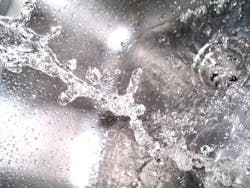The Water Quality Assn. (WQA) urges homeowners concerned about their local public water system's quality of water to utilize their municipality’s Consumer Confidence Report (CCR). The U.S. Environmental Protection Agency (EPA) requires community water systems (those serving more than 25 people or 15 households) to issue a CCR every year by July 1.
“We strongly urge anyone concerned about the quality of their drinking water to take advantage of the CCR,” said WQA Deputy Executive Director Pauli Undesser. “The report not only informs residents about the source of their drinking water, but it also provides recent test results about what contaminants may be in the water.”
EPA’s Safe Drinking Water Act requires municipalities to test water supplies from once to several times per year, depending on the potential contaminants and size of the population served. However, most of these tests are not designed to monitor the water quality in the pipes which transport water to residents’ homes. Biofilms, sediments and scale build up in all types of pipe, including plastic or pipe made from a metal alloy such as lead. Water that is very high quality when it leaves the treatment facility can become contaminated as it travels through miles of pipe to reach a homeowner’s faucet.
“If your CCR states the water in your community is safe, but it still tastes or smells bad, you might want to do further testing or treatment,” Undesser said. “If your home or business receives water from a private well, you are responsible for testing and treatment of your water as no standards govern the testing of private well water.”
Just last week, EPA and the Centers for Disease Control and Prevention (CDC) released the results of an investigation into at-home water filters treating for lead in Flint, Mich. The findings demonstrate that the third-party certified filters distributed by the State of Michigan were effective in removing lead or reducing it to levels under the EPA action level of 15 ppb. To find a certified product, visit www.wqa.org/find-products#/.
Residents should have their drinking water tested through a certified water testing laboratory. Homeowners can check with WQA at www.wqa.org to find a water quality professional or connect with a certified testing lab through EPA athttp://water.epa.gov/scitech/drinkingwater/labcert/statecertification.cfm.
Many Consumer Confidence Reports are available on each municipality’s website. Residents can also check EPA’s site at http://ofmpub.epa.gov/apex/safewater/f?p=ccr_wyl to find the water quality report for their community.
Source: The Water Quality Assn.

